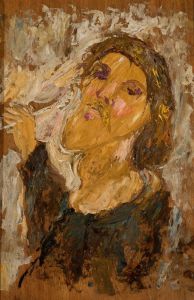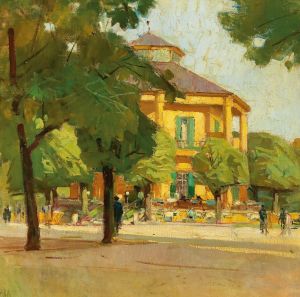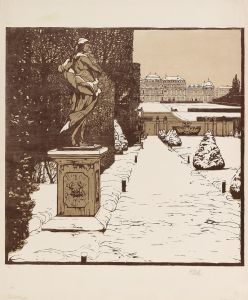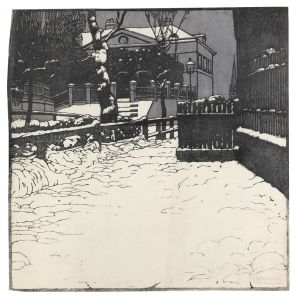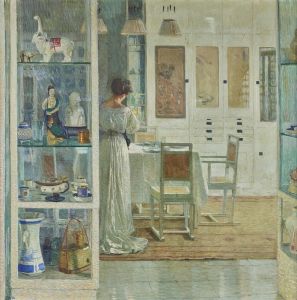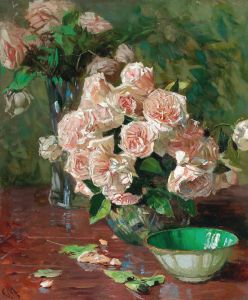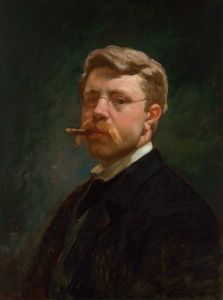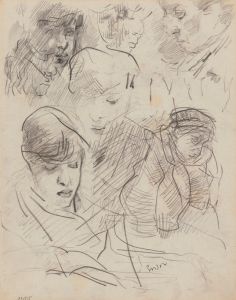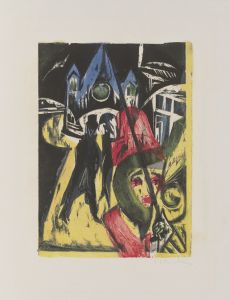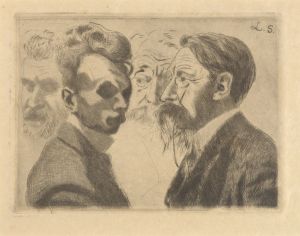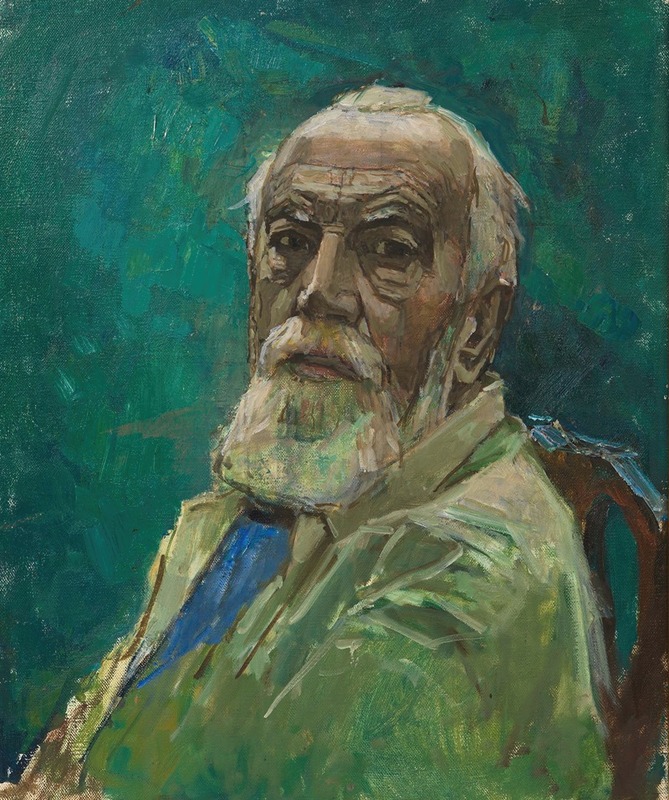
Selbstbildnis Carl Moll
A hand-painted replica of Carl Moll’s masterpiece Selbstbildnis Carl Moll, meticulously crafted by professional artists to capture the true essence of the original. Each piece is created with museum-quality canvas and rare mineral pigments, carefully painted by experienced artists with delicate brushstrokes and rich, layered colors to perfectly recreate the texture of the original artwork. Unlike machine-printed reproductions, this hand-painted version brings the painting to life, infused with the artist’s emotions and skill in every stroke. Whether for personal collection or home decoration, it instantly elevates the artistic atmosphere of any space.
Carl Moll (1861-1945) was an Austrian painter and a prominent figure in the Vienna Secession movement, which sought to break away from the traditional academic art styles of the 19th century. One of his notable works is "Selbstbildnis Carl Moll," which translates to "Self-Portrait Carl Moll." This painting is a significant example of his contribution to the art world and provides insight into his style and artistic philosophy.
"Selbstbildnis Carl Moll" is a self-portrait that captures the artist's likeness with a focus on realism and detail. Moll's self-portraits are known for their introspective quality, often reflecting his contemplative nature and his position within the art community. The painting showcases his skill in capturing the human form and his ability to convey personality and mood through his brushwork.
Moll was a co-founder of the Vienna Secession in 1897, alongside other notable artists such as Gustav Klimt, Koloman Moser, and Josef Hoffmann. The Secessionists aimed to create a new style that was free from the constraints of academic art, emphasizing artistic freedom and innovation. Moll's work, including his self-portraits, often embodied these principles, blending traditional techniques with modernist sensibilities.
In "Selbstbildnis Carl Moll," the artist employs a muted color palette, which is characteristic of his work. The use of light and shadow in the painting is subtle yet effective, highlighting the contours of his face and the texture of his clothing. This attention to detail is indicative of Moll's meticulous approach to painting and his dedication to capturing the essence of his subjects.
The background of the self-portrait is relatively simple, ensuring that the focus remains on the artist's face. This compositional choice reflects Moll's interest in the psychological aspects of portraiture, as he often sought to reveal the inner life of his subjects through their outward appearance. The direct gaze of the artist in the painting creates a sense of connection with the viewer, inviting them to engage with the work on a deeper level.
Moll's contributions to the Vienna Secession and his role in the development of modern art in Austria cannot be overstated. His self-portraits, including "Selbstbildnis Carl Moll," are valuable not only for their artistic merit but also for the insight they provide into the artist's life and the broader cultural context of the time. Through his work, Moll helped to shape the direction of Austrian art in the early 20th century, leaving a lasting legacy that continues to be appreciated by art historians and enthusiasts alike.
Overall, "Selbstbildnis Carl Moll" is a testament to Carl Moll's skill as a painter and his significance within the Vienna Secession movement. The painting remains an important piece within his oeuvre, offering a glimpse into the mind of an artist who was deeply committed to exploring new artistic frontiers while remaining grounded in the traditions of the past.





